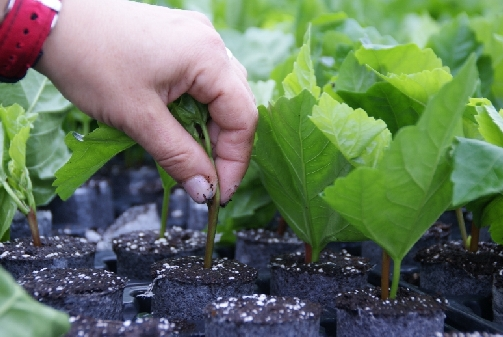All living organisms are capable of reproduction. Reproduction – increase in the required number of similar plants in different ways. There are two main ways: vegetative and sexual (seed).
Vegetative – the formation of a new plant from part of the parent (from bulbs, whiskers, shoots, division of roots, leaves, branches) plants. Vegetative propagation is the exact hereditary transmission of the basic properties of the plant, which is a great guarantee of obtaining a copy of the parent plant.
Next, we will consider in detail one of the methods of vegetative propagation, propagation by cuttings, on the example of Hibiscus (Chinese rose).
Rules of propagation by vegetative means:
- Choose a plant that we will propagate.
- Determine the method of reproduction: vegetative or seed.
- Prepare the pot. Choose a small pot, depending on the plant we are going to propagate, be sure to make a drainage hole to drain excess water.
- Land selection. Land is a very important factor in rooting; should be sterile and moderately nutritious, neutral, best suited soil for seedlings.
- Carefully inspect the part of the plant that we are going to root so that there are no rot, pests, all the extra leaves are removed, leaving 1.5 leaves.
- Particular attention should be paid to the part that will be directly buried in the ground. There should be no part of the stem or anything else that could rot.
- If you need to use a rooter, it will provide 90% success.
- When pushing a twig or leaf into the ground to be rooted, be sure to water and compact the soil around the shoot in the ground to prevent air pockets that will rot.
- Cover with a jar or cling film to provide the required humidity.
- We put our pot in a warm and shady place. Leave for 30 days, watered periodically as the soil dries.

